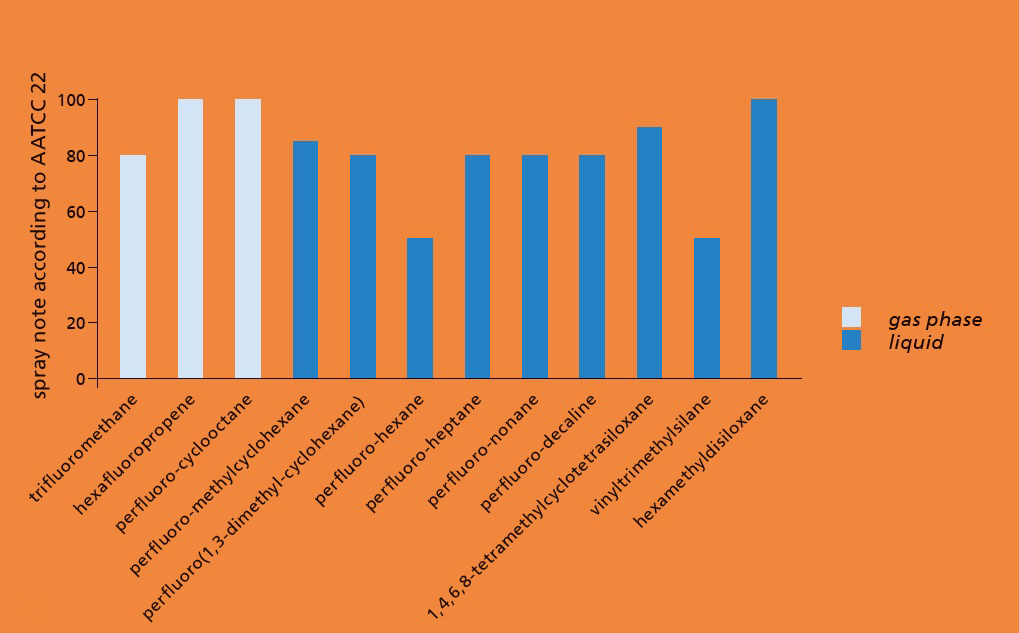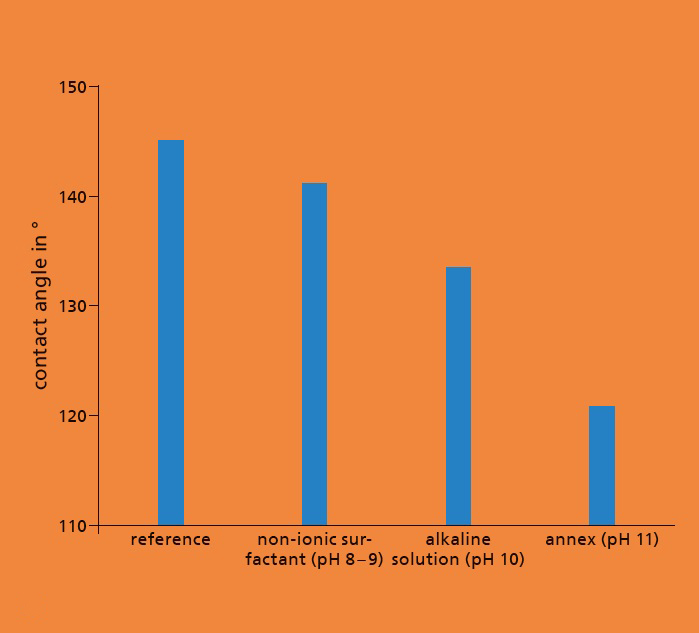Background
For conventional textile finishing, water and oil repellent properties are achieved using wet-chemical treatment with perfluorinated organic compounds. Good oil repellency (oleophobicity) requires particularly long fluorocarbon chains. However, molecular fragments of the finishing chemicals may be released during the original treatment as well as the washing and re-impregnation stages. These fragments or their reaction products include perfluorooctanoic acid and perfluorohexanoic acid. These compounds are toxic environmental pollutants that are bioaccumulative and suspected of being carcinogenic.
It is therefore necessary to establish more efficient and more environmentally friendly finishing processes that release fewer pollutants and avoid fluorocarbon treatments as far as possible. They are not necessary in an outdoor environment, but oil repellency is still important for personal protective equipment (PPE) such as surgical textiles. Furthermore, coatings should be stably applied to the surface in order to avoid constant post-processing of the fabric.
 Fraunhofer Institute for Interfacial Engineering and Biotechnology IGB
Fraunhofer Institute for Interfacial Engineering and Biotechnology IGB
